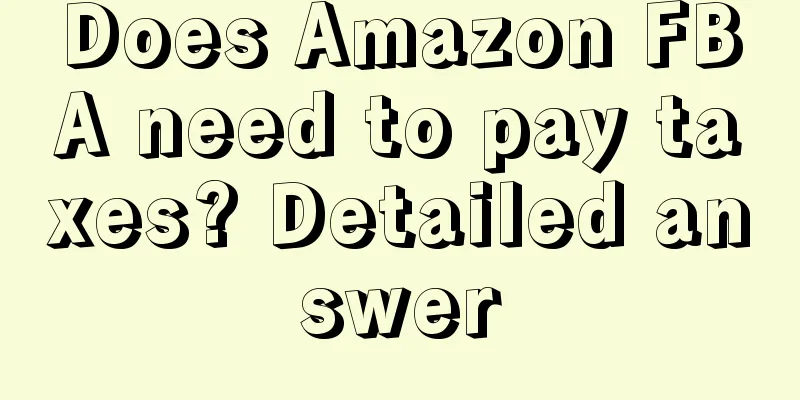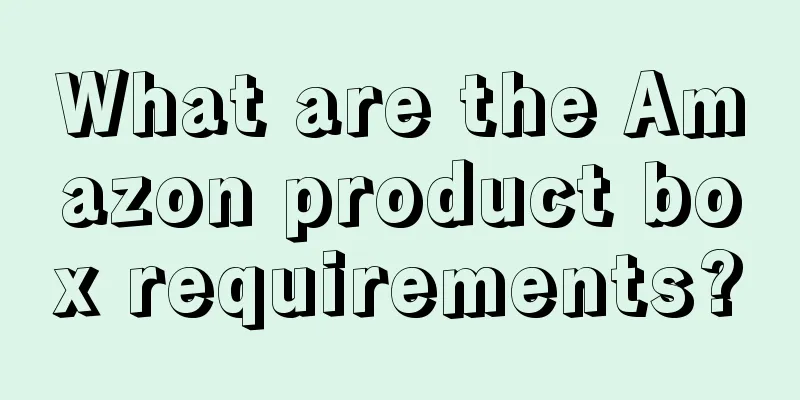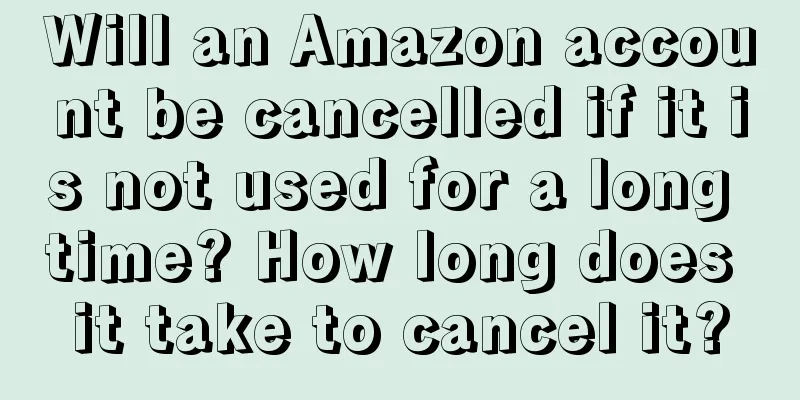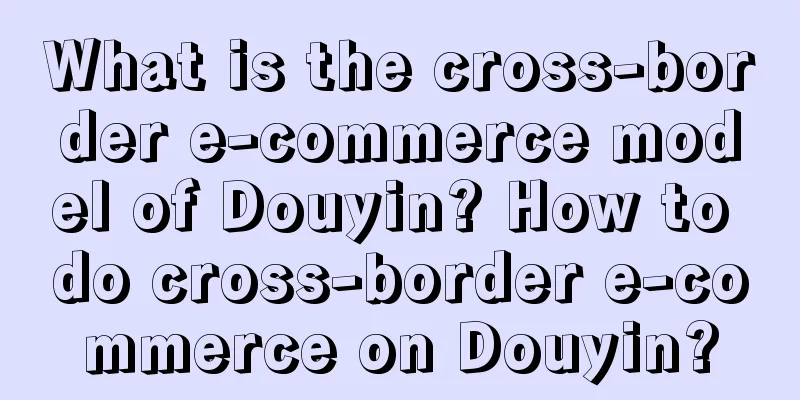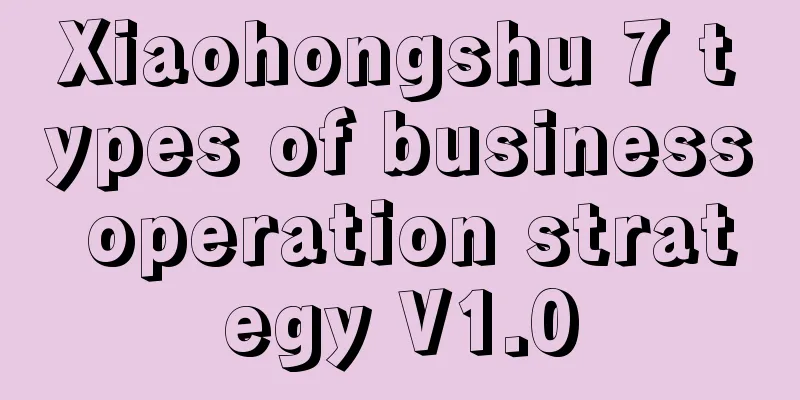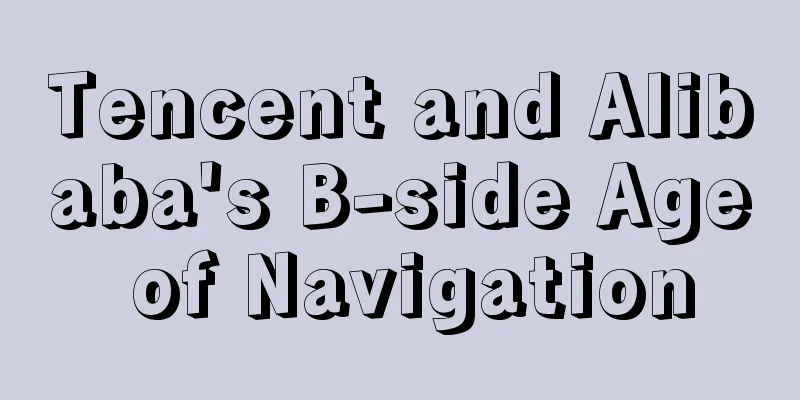Ten thousand words long article: How B-side Internet products can acquire customers through multiple channels
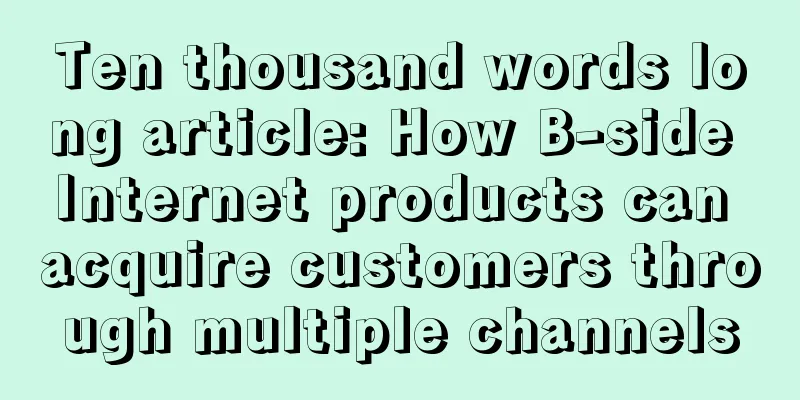
Warm reminder : The full text is 10930 words + 35 pictures, and the estimated reading time is 50 minutes. It is recommended to collect it first and then read it slowly. Last month, I wrote an article titled "The next trend of the Internet may be innovation in the supply chain and B2B industries". Section 2 of the article mentioned that B2B e-commerce trading platforms have problems with poor network effects and difficulty in acquiring customers online. Then a reader sent me a private message asking how B-side products can acquire customers . So I thought about combining my experience as both the first and second party in B-side products over the years to briefly talk about how B-side products can acquire customers through multiple channels. First of all, we need to clarify a concept: What is a B-end product? B-end products are Internet products for corporate users. Users use them to conduct daily business activities, such as corporate inventory management, sales statistics, employee attendance assessment, etc. The more common B-end products include ERP, WMS, TMS, CRM, OA, HRM, intelligent customer service systems, etc. Some readers may think that B-end products are SaaS products, while others may think that SaaS products include B-end products and C-end products. In this article, we will not discuss or extend these concepts, nor will we analyze the differences between SaaS/PaaS/IaaS. For the sake of convenience, this article will equate some SaaS products with B-end products (although this is not rigorous enough). This viewpoint only applies to this article. Please be aware. 1.B-end product overviewThe most common way to classify B-end products is to classify them according to application scenarios and industry fields, and divide them into two major categories: business vertical products and industry vertical products. Then, further subdivided based on these two major categories, for example, iResearch further subdivided business vertical products into CRM, customer service and call center, marketing, enterprise live broadcast and other categories. The following is an industry map of business vertical products in 2024, which will help readers get a preliminary impression of this concept: The above business vertical classification method is divided according to application scenarios. These products focus on solving specific problems in certain links or scenarios. According to the industry or field to which different customers belong, there is an industry vertical classification method. Industry vertical products will solve more business scenarios. Some SMB customers (small and medium-sized enterprise customers) may cover all business processes and scenarios. Of course, there are other ways to classify B-end products, such as general and vertical. This classification method is mainly based on the industry dimension, without distinguishing from the business dimension (such as marketing, sales, customer service). To give an inappropriate example, Zhaopin.com is a general recruitment product (HR for all industries), while Lagou.com is a vertical product for the Internet industry. Strictly speaking, B2B e-commerce platforms such as Kuaidi Mall and Yijiupi also meet the definition of B-end products. They are Internet products for small and micro self-employed enterprises. Small B catering stores or supermarkets and convenience stores use these B2B products (APPs or mini programs) to carry out daily commodity procurement business activities. However, the customer acquisition channels and methods of B2B e-commerce platforms are still quite different from those of the above-mentioned conventional B-end products, so I will open a separate chapter at the end of this article to explain them. 2. Where are the customers?There is a very important principle for B-end products: we should go where the customers are. Only when B-end products know the regions and industries where the customers of TA are located, and the places where the customers often hang out, can they be seen by them, and then slowly invade the minds of customers, and then acquire them, and then form activation, payment, process and conversion. But the question is: where are the customers? Before answering this question, let me share an excerpt from "Xiaomi's Entrepreneurial Thinking".
I use this example to illustrate a point: if you don't know where your customers are, then try to find as many as possible. When the number of channels increases, you need to classify and manage them. For example, you can classify them into online channels and offline channels, and online channels-social media channels. You can then score the channels based on the number of customers + quality (conversion rate) + ROI, and then classify them into four categories: high-quality, potential, mixed, and junk, or SABCD, based on the scores. The strategies and resources corresponding to each type will also be different. In another article "Ten Thousand Words of Practical Knowledge: The Simplest Way, Growth Can Be So Easy", I mentioned a point of view: Any product (whether B-end or C-end) cannot be satisfied with the current customer acquisition channels. It is necessary to actively find and try new channels while managing existing channels, and be ready to rebuild its own traffic and customer acquisition structure at any time to ensure that its new customer acquisition is sustainable . The above point is very important. If you don’t take it seriously, the consequences will be serious. Let’s take a C-end product as an example. Previously, there was a financial lending product called Qudian, and more than 50% of its customers came from Alipay. After the contract between the two parties expired, Alipay terminated the cooperation. Because Qudian relied too much on Alipay for customer acquisition, its independent customer acquisition ability was poor and its customer acquisition structure was unreasonable, so after the two parties broke up, Qudian’s user base and revenue data plummeted. If you are interested, you can check their financial reports to find out. Here is another example from the financial sector. In the early years, offline mobile phone stores had a large number of mobile phone installment services, and the institution that provided this service had the largest market share, the global consumer finance giant Home Credit. At its peak, Home Credit had more than 70,000 employees, and its main revenue came from providing mobile phone installment services to customers. Its customer acquisition structure was extremely simple. The former industry leader in consumer finance is now facing the situation of "selling itself". 3. Online channelsIn the above, we have actually made a simple foreshadowing. The customer acquisition channels of B-side customers can be roughly divided into two categories, namely online channels and offline channels. Then each category can be further subdivided. In general, online customer acquisition channels include but are not limited to the following. 3.1 Search SEO/SEMIf we rank the importance of online customer acquisition channels, SEO is undoubtedly the first. Although users are more accustomed to searching within apps in the mobile Internet era, such as searching directly for relevant content in WeChat, and Zhihu and Bilibili have their own in-site (in-app) search, what has changed is only the terminal device used by users for search, and the search action still exists. For example, if your company is planning to install an intelligent customer service system, and this task is assigned to you or someone else, no matter who it is, you must first go to Baidu or Sogou to find out what intelligent customer service systems are currently on the market, and then go to Zhihu or other media to understand the product's market share, what customer service systems competitors are using, or which companies are using the intelligent customer service systems you have found. Many companies and products do not realize the importance of search engine traffic and SEO, and spend money on advertising. SEO is the foundation of all B-end products. This free and long-term customer acquisition channel must be done well and thoroughly. In the early days of iCIBA's website, search engines could contribute nearly 70% of the traffic. In Baidu, whether you search for a certain word such as abandon, or the meaning of abandon, the phonetic symbol of abandon, the pronunciation of abandon, examples of abandon, etc., basically Kingsoft PowerWord will appear in the first 3 search results (I have tried it and it is currently in the top 5), and Kingsoft PowerWord also generates an exclusive page for all the words www.iciba.com/word?w=abandon. There are at least 250,000 words in English, and a large number of users are searching for the meaning and pronunciation of a certain word every day. How much search traffic does this require? Let's take another example of B-end products. According to Qichacha data, there are more than 16 million catering companies in China. Among them, medium- and large-scale catering businesses have a rigid demand: catering store cashier systems, and then they will search like the following. As a top 3 solution provider in the catering store cashier field, Tiancai Shanglong did not appear in the first 3 pages of search results (not the first 3 results), losing its base in vain. Some readers may ask, if SEO is so important, why do many B-side products seem to ignore it? I personally think there are two reasons: SEO is a product of the early PC Internet era. Now that mobile Internet accounts for a high proportion, many SEO practitioners have changed their careers. Secondly, SEO takes a long time to produce results, and many companies don’t have the patience to make continuous investments. Many companies do SEM directly without doing SEO well (as shown in the figure below). I personally think this is not a cost-effective operation. Of course, if the average customer price of your product is high enough, there will be no problem in doing SEM if the overall input-output ratio is controllable. But for an intelligent customer service system with an average customer price of only about 20,000, SEM is a bit uneconomical. Some readers may ask, I understand the principles, but how to do SEO well? There are a lot of articles about SEO on the Internet. I recommend a book that I think is good, "SEO Practical Code", written by Zac Zanhui, whose blog is www.seozac.com. This article does not discuss the details of SEO here, but only shares some of my thoughts and ideas. First, you can go to www.apppc.com to find the 500 most visited websites in China, and then think about how your B-side product should publish original content and information articles on each website. For example, Baidu is the second most visited company in the world. If you continue to enter baidu.com in alexa.aizhan.com, you can further query the visit rankings of Baidu's products. Among them, search is the product with the highest number of visits, followed by Zhidao, Baidu Encyclopedia, Baijiahao and Baidu Tieba. As we all know, the higher the weight is, the higher the ranking will be on the search results page. For example, if the same article is published on Baidu Baijiahao and Zhihu, in most cases the search results on Baijiahao will be displayed higher (Baidu search engine prefers its own products). Therefore, it is recommended that when B-end products are deployed on Baidu, if possible, it is recommended to try all the products that can be promoted and released by Baidu. Then you can go to Baidu Knows, Baidu Encyclopedia, and Baijiahao and try to enter the major category of your B-side product, such as CRM, intelligent customer service, project management, etc. Then you can see which B-side product is ranked at the top, and then you can imitate and learn from it. The picture below shows that when I searched for the keyword CRM on Baidu, the content of Jiandanyun appeared on the first page, along with related videos and Zhihu content. If other competing products in the CRM field do not build relevant content and only your B-end product does, then you have virtually monopolized Baidu's search traffic. In summary: SEO is the foundation of all B-side products and is worth investing in. In practice, in addition to considering Baidu SEO, Sogou SEO and 360 SEO should not be ignored. After all, many Tencent products use Sogou Search, and 360 Browser is the default browser for many domestic users. 3.2 Social MediaThere is a brand building theory in brand marketing: on the premise of clear positioning, conduct saturation attack to quickly occupy the user's mind. This theory is partially applicable in the field of C-end products, but in the field of B-end products, this concept is not very applicable. Let me give you an example to explain this theory briefly. In the early days of the shared bike war, almost all C-end brand products invested heavily in brand exposure and market operations, and were all conducting saturation attacks in the hope of quickly occupying the minds of users, and all wanted to become the top three products in the market share in the shortest possible time. Because users' brain capacity is limited, they cannot remember too many products, but they can definitely remember the products with the largest market share. These products all want to become synonymous with this industry. For example, jelly = Xizhilang, essential oil = Afu, and taxi = Didi (KuaiDi). Therefore, these products will engage in hand-to-hand combat before the market structure is finalized. For C-end products, the "survivors" will be the kings. Now you should understand why there will be various subsidy wars when new C-end products appear in each industry/field. However, the cost of occupying the user's mind through saturation attack is quite high. Enterprises without a small target are not suitable for saturation attack. To achieve the "saturation" in saturation attack, it is necessary to promote and expose the product in all aspects, both online and offline. The cost of these operations is at least 1 small target. However, a B-end company like Youzan only has an annual revenue of 1.5 billion yuan. It is obviously unrealistic to use a small target to launch a saturation attack, and B-end products cannot achieve quick victory like C-end products. I read the concept of saturation attack in an article by Jiang Nanchun of Focus Media in 2016. Interested readers can look for the original text, which contains more detailed explanations, so I will not elaborate on it here. The user volume of B-end products is several orders of magnitude smaller than that of C-end products. For example, Youzan, which was founded in November 2012 and has five major business systems including social e-commerce, new retail, beauty industry, education and Youzan internationalization, only had 72,621 existing paying merchants in the second quarter of 2023. For example, for C-end products with hundreds of millions of active users, how can you saturate these 70,000 people among China's 1.4 billion population? It's not that the B-end doesn't want to do it, but that it can't do it. The needs of C-end consumers can be created, and saturation attacks can be carried out. The needs of B-end customers are aroused, and there is no way to use saturation attacks to occupy the minds of users. You can only settle for the second best and maximize exposure, popularity and influence. In this way, when B-end customers need to use B-end products, they will think of your product first. For example, when I was browsing Zhihu, I found a phenomenon that almost every Zhihu question about data analysis, user operation, CDP, and user portrait would have an answer from Sensors Data. After the account was created, the agency has answered 528 questions, published 99 videos and 841 columns, has more than 10,000 collections, and has more than 10,000 followers (fans). As mentioned in the introduction of Sensors Data's official website, its business has covered more than 30 industries, with more than 100,000 active customers and more than 2,000 paying customers. Some of these followers on Zhihu are not users or paying customers of Sensors Data at this moment, but at some point in the future, if the companies of these followers (fans) have data business needs, they will most likely think of Sensors first, rather than other companies such as Umeng or GrowingIO. Many B-side products may have thought of this, so you can see B-side products in almost all social media products you can see and think of, such as WeChat public accounts, video accounts, Weibo, Douyin, Kuaishou, Xiaohongshu and other platforms. These channels are important channels for B-side products to interact and communicate with customers. These B-end products regularly release solutions and success stories for various industries. They use short videos, pictures, texts and other forms to convey the core concepts and solutions of B-end products to the audience, and then plant a small seed in the hearts of B-end customers. When customers need this at some point in the future, B-end products will be awakened, thus completing customer acquisition. 3.3 Information WebsiteI have singled out information websites here, mainly because many people ignore or underestimate the power of information websites. As we mentioned above, even the 10-year-old SssS product Youzan only has 72,000 paying customers, but the customer unit of B-end products is households, while the customer unit of C-end products is people. The number of individual users or natural persons included in one B-end customer household cannot be underestimated. For example, New Hope Dairy, a subsidiary of New Hope Group, is using Youzan's mall products. New Hope Dairy has 15 major brands. I remember that 7 brands have opened Youzan malls. These 7 brands are 7 customers in Youzan's view, but these 7 customers correspond to many internal employees of the company, involving multiple employees from multiple business departments such as marketing, sales, operations, and products. Compared with the total number of 10,000 employees of New Hope Dairy, there must be at least several hundred individual employees who care about and use Youzan e-commerce. These users also browse information online, pay attention to industry trends, and have the need to learn and improve themselves. 36Kr, Huxiu, and video websites are relatively important channels. B-end products also need to be exposed and promoted on information websites and forums that are often visited by ordinary C-end users. The traffic of a single website or the number of target users may not be large, but more websites or communities can bring in good traffic. Here are two examples that are not particularly appropriate. Case 1 : When I was operating web games in the early years, I would try my best to find some free or cheap C-end customer acquisition channels. Later, we found that some wallpaper download websites could bring in a lot of users, so we tried our best to find art colleagues to help make some original paintings of characters and scenes and then upload them to the download website. Case 2 : When I was operating web games, almost all manufacturers went to portals such as 17173 and Duowan to advertise to acquire new customers, which led to a much higher cost of acquiring customers. So our marketing colleagues took a different approach and tried to advertise on Qidian Chinese website and 360 Security Guard. As a result, the ARPU value of users from these two channels was extremely high. Then my colleagues quickly signed annual contracts with them before our competitors could react. After that, Qidian was almost full of our game product advertisements. Although the above two examples are about C-end products, the principles are also applicable to B-end products. Some information websites and forums that you think are worthless and unproductive may not really be worthless. Some channels that you think are worth investing in and that competitors are also investing in may not be suitable for your products. You have to try them to know. For example, everyone says that Baijiahao, Sohuhao, and Penguinhao are not easy to do and not worth doing. You can try them out first and verify them with the final data. If they work, you can continue to work on this channel later. If the effect is not good or very poor, you can give up immediately. This means that you can see a lot of white papers, industry reports, industry surveys, knowledge maps and other content on various information websites/forums. These contents either require you to leave a message to obtain them, or to follow a public account. At worst, these contents will contain private information and leave the B-side company's public account QR code or website, etc. 3.4 Old employees mentoring new employeesA related research report mentioned that the current customer acquisition cost of C-end products is over 100 yuan, and some may reach over 1,000 yuan. We will not prove or study this specific value, but the customer acquisition cost of C-end products will not be low. iResearch’s research report once pointed out that the average customer acquisition cost of some B-end products will exceed 10,000 yuan. According to the total life cycle value (LTV) of SaaS products: the CAC customer acquisition cost must be at least greater than 3:1 to be a good business, or to achieve a relatively ideal input-output ratio. If calculated based on the average customer price of a certain B-end product of 10,000 yuan (which is already very low), the customer acquisition cost must be controlled within 3,333 yuan to be ideal. Some people may ask whether old customers can also bring in new customers in B-end products? The answer is yes, NetEase Qiyu Intelligent Customer Service does this. Assuming that the average customer price of a friend's recommendation is 20,000 yuan, the referrer is given a 10% reward of 2,000 yuan. Compared with the B-end customer acquisition cost of several thousand or tens of thousands of yuan, this is already a relatively economical customer acquisition channel. As for the effectiveness of NetEase Qiyu Intelligent Customer Service System's mechanism of bringing old customers together with new customers, it is not very clear here, but as long as the cost can be calculated, it can be regarded as an effective channel for acquiring customers. 3.5 Application MarketiOS has the App Store, and Android has various application markets. Various B-end products also have third-party application markets embedded in IM software, as shown in the figure below. Commonly used office IM software such as WeChat for Business, DingTalk, and Feishu all have corresponding third-party application markets. WeChat actually has a corresponding WeChat service market, as shown in the figure below. It is recommended that various B-end products can publish their own applications in the corresponding application market or service market, which can also gain a certain degree of exposure and thus acquire customers. My previous company found the cheapest B-end SaaS product in the WeChat service market and completed the construction of the group's internal purchase applet. Moreover, the biggest advantage of the WeChat service market is that you can view sales and product prices, which can provide a great reference for decision-making (many B-end products require pre-sales consultation to obtain a more complete quotation). 3.6 Advertising FlowThe "2024 China B2B Enterprise Information Flow Delivery Customer Acquisition White Paper" released by SalesDriver shows that as of April 2024, the proportion of domestic B2B companies carrying out information flow delivery has reached 40.6%. The decline in the effectiveness of the original customer acquisition channels is the main reason for them to choose information flow. Big Engine, Baidu Information Flow, and Tencent Guangdiantong are the commonly used information flow delivery channels for B2B enterprises. The main reasons for not considering products for information flow delivery are the concerns about poor results and budget constraints. The inability to accurately reach the target population is the biggest challenge that B-side products or companies face when developing information flows. This is also determined by the characteristics of B-side products, that is, it is difficult to accurately hit hundreds of thousands or millions of key customers among a population of 1.4 billion. This is also the reason why the white paper shows that only 8% of B-side products are satisfied with the results of information flow delivery. This is not difficult to understand. The main purpose of advertising is to retain customer information, which is most likely an email address or mobile phone number, which can only be regarded as a clue in the scope of CRM. In the customer acquisition method of advertising, users are passively reached, while the several methods described above are mostly initiated/searched/explored by users themselves. The motivations and triggering mechanisms of the two are very different. Therefore, I always believe that advertising is not a good customer acquisition channel for B-side products. It may be tried for B-side products with simple product architecture or solutions, but it is not recommended for B-side products whose core selling points and special functions are difficult to extract, and whose pictures, texts or video content cannot be fully displayed on a limited page. 3.7 Email MarketingAlthough many people say that email marketing is an important channel for B-side enterprises to acquire customers, many companies or products are still not very interested in this channel. I think there are two main reasons for this.
Assuming that the above two problems are solved, email marketing will face the following conversion funnel problem. I have worked on email mailboxes in C-end products before. The proportion of users who finally opened the emails did not exceed 10%, and the ultimate goal was to get them to leave their information, but we had already left the information before. In summary: EDM email marketing is a bit useless for B-side products. It is not easy to do it well, but it is a pity to give up. 4. Offline channelsGenerally speaking, the online customer acquisition channels for B-side products include but are not limited to the following. 4.1 Events and MeetingsB-end products can participate in offline industry exhibitions and activities, not only to showcase their products and services to potential customers, but also to communicate with potential customers face to face, while also increasing brand exposure and visibility. Many of these activities have been fixed, such as the National Sugar, Wine and Food Fair held twice a year. Of course, there are also many offline Internet-related activities and memberships, such as the 2024 World Internet Conference, the just-concluded 2024 New Retail Conference, and the China Retail Supply Chain Conference. Some niche sub-industries will also have some conferences and activities, such as the 2024 China Call Center and Enterprise Communications Conference. The purposes of these meetings are nothing more than the following. The following figure applies to most offline activities and meetings (the proportions may be slightly different). Therefore, B-side products can participate in activities and meetings to not only find new customers, but also gain an in-depth and comprehensive understanding of the products and business trends of leading manufacturers in the industry. Of course, with the maturity and popularity of live broadcast technology, people no longer need to travel long distances to attend offline meetings, which also saves costs for B-side products. 4.2 Industry organizations/associationsJust like product managers have their own organizations, namely various industry groups and regional groups, each industry will also have its own associations or organizations. For example, the education industry will have an education equipment industry association, which will take the lead in organizing a national education equipment exhibition. The main exhibition scope of the exhibition is as follows, which basically covers all upstream and downstream links and each sub-segment of the entire education industry. Product managers will more or less join some B-end, C-end, G-end, CRM, SaaS WeChat or QQ groups. The same is true for operations colleagues. They will join various groups such as content operations, event operations, Xiaohongshu operations, Douyin operations, Beijing operations groups, etc. The heads of IT information departments of many companies will also have a CIO communication group. I know of several traditional companies whose bosses don’t really know much about technology and the Internet. So when they implement an information technology project such as CRM, travel expense or smart customer service, the person in charge of the information department has a large decision-making weight and may even influence or guide the boss’s final decision. Therefore, the CIO circle is also a good channel for B-side customer acquisition. For example, Company A in the Chengdu CIO group was the first to use Sensors Data's CDP product. If the CIO or information manager of Company A can endorse Sensors in the group, then other companies in Chengdu will be more likely to choose Sensors when they are ready to use CDP products. After all, if a product has been used and praised by others, the probability of failure when used by your own company will be much lower. I know a company in Chengdu that has sponsored CIO's offline activities in Chengdu several times. The company then won many delivery projects in Chengdu. It has to be said that the power of the CIO circle cannot be underestimated. 4.3 PartnersThe capabilities of each B-end product are limited, and there are few B-end products on the market that provide full-process solutions. Therefore, B-end products can achieve mutual benefit and win-win results through mutual recommendation, resource sharing and customer sharing, and improve customer acquisition results. For example, a company I worked for previously built systems and projects for various industries across the country. Almost all of the projects involved registration modules and required the use of SMS verification code functions. This verification code function is provided by Baidu, Huawei, Tencent and other manufacturers, and the basic capabilities and prices of these products are almost the same, so it feels like any one of them is fine. Because our company's first few projects used the SMS verification code function of a certain manufacturer, such as RongCloud, my colleagues are familiar with the docking and process of this product. Therefore, when there are new delivery projects later, if the client does not have special requirements and instructions, we will generally recommend them to choose RongCloud, and most parties will accept our suggestions. There are many similar cases. For example, many projects require data tracking and statistical analysis functions, and we, Party B, will also recommend Party C's B-end products to Party A. Some directly include many Party C products when providing project proposals, which together constitute an overall solution. 4.4 Offline PromotionFor some B-end products with relatively low conversion thresholds and concentrated or easily identifiable B-end customers, offline promotion is actually possible, such as the aggregated payment QR codes launched by major banks, and the fast donkey purchases for offline catering stores. The company that owns the B-end product can do the promotion itself, or it can outsource it to a third-party promotion organization and team. As for which method to adopt, the B-end company can calculate the input-output ratio to see which one is more economical. Of course, if the B-side company wants to quickly occupy the market without leaving any chance for its competitors, it can take a two-pronged approach and use its own team + outsourced team to do the marketing together. 4.5 Project BiddingNowadays, whether it is government agencies, state-owned enterprises, or traditional private enterprises, they are all engaged in information construction. In order to comply with regulations, they will select suppliers and products through bidding. For example, a city education bureau wants to develop an offline knowledge competition solution. It is definitely unrealistic to do this by itself, so it can only bid. Therefore, B-end products can pay more attention to some bidding websites and look for some business opportunities from them. Don't underestimate the bidding, the bid amount of some projects is really not small, some of them are the kind that don't open for a year, but make a profit for a year after opening. My previous company had a rather tricky operation in the bidding area. For example, the company had never had any clients in the automotive industry before, so the first client would be sold at cost price or even at a loss. I was very confused at the time, but then I suddenly figured it out one day. There are three reasons for doing this. First of all, the company did not have many projects during the epidemic, but the company had to pay employees as usual even if they had nothing to do every day. So even if the new car project did not make money or made a small loss, there would still be some income, which could avoid eating up all the capital and stabilize the morale of the employees. Secondly, it doesn’t matter if the first project loses money. What’s important is that the customer can do some additional projects based on the original contract, such as the second phase of the project, a separate data governance project, or a digital operation project. These new projects are planned by Party A. If they are handed over to Party C, there will be many problems (inconvenience in managing multiple suppliers, compatibility of system design and architecture between Party B and Party C, etc.), so it is likely that it will be handed over to Party B, that is, us. Again, we delivered the project to the company, and then we could use this client case to expand other clients in the automotive industry, such as Geely, Changan, etc. At the same time, we also accumulated delivery experience in the automotive industry. In the short term, you have only bid for one project, but if it goes well, you can continue to work with them on Phase 2 and Phase 3. Many of our customers have signed Phase 2 and Phase 3 contracts after the Phase 1 contract was concluded. 5. Undertake transformationIn most cases, the various traffic brought by the various channels mentioned above will directly enter the official website of the B-end product (of course some will enter the corresponding landing page). The B-end product must do a good job of accepting and converting customers, that is, complete the conversion of customers on the official website or landing page. On the website, B-end products should let users know in a short time what problems you can solve for them and what concrete value you can bring. For example, the first screen content of NetEase Qiyu Intelligent Customer Service is [All-channel access, one-stop response to customer needs, and multi-dimensional improvement of service efficiency]. At the same time, a customer service workbench page is added on the right side of the page, giving users a more intuitive and three-dimensional impression of the product. At the same time, the page also places two eye-catching blue buttons to attract users to try it for free. When users are looking for more information about Qiyu Intelligent Customer Service, the website has designed several other hooks to further reduce users' decision barriers through a combination of methods. Cost reduction calculator: NetEase Qiyu knows that the main business value of intelligent customer service is to reduce costs and increase efficiency. In this case, I will directly make a tool to help you calculate how much labor costs you can save each year, and then you can directly report this number to your boss. At the same time, the page also uses figures such as 401,400 yuan, 1 exclusive plan, 3 customer case analyses, 1 senior consulting expert and 7-day free trial to further convert customers. Demo: NetEase Qiyu also knows that users who want to try the app for free will have concerns about leaving their phone number on the first screen of the homepage, and that their information will be abused or cause harassment calls, so they made a smart customer service demo for users to learn more about smart customer service. Similarly, Sensors Data provides introduction videos and experience demos to help users learn more about the app without logging in (as shown in the figure below). This is not all. NetEase Qiyu also provides a lot of useful content such as "Customer Service Training Guide", "Customer Service Management Guide" and other documents for users to download for free. At the same time, it also constantly reminds customers through a large amount of data such as 400,000+ customers and well-known product logos such as Anta, Joyoung, and Heytea that many powerful large companies are also using our products. Among the B-end products, NetEase Qiyu Intelligent Customer Service and Shence Data’s official website are both well done. This is a positive and good case. If there is a good case, there will be bad and negative case. I will share one here. Some readers may have heard of Guming Tea Drink, but do you know that Guming Tea Drink also makes a catering ordering cashier system? On Mother's Day, I went to eat a garden hotpot with my family, which is said to be an investment of 70 million yuan. As an IT practitioner, I looked at their ordering mini program, which was actually from Zhejiang Guming Technology. After the meal, I searched specifically and found no valid information about Guming's ordering (you can try it if you don't believe in evil). 6. E-commerce platform acquires customersSome of the above-mentioned customer acquisition channels are also applicable to B2B e-commerce platforms, but based on my previous experience in making wine and beverage B2B e-commerce platform Danlu.com and now making special U selections for catering supply chain B2B food ingredient platform, the most applicable method may be offline promotion. The reason I have discussed in detail in my previous articles "The next trend of the Internet may be innovation in the supply chain and B2B industry" and "9 problems that all B2B practitioners will encounter", so I will summarize it briefly here. The overall level of education for B2B e-commerce platforms is relatively low, the level of information acceptance is not high, and the existing offline transaction methods have existed for a long time. Customers are relatively accustomed to the offline model and have established a trust relationship, and there are cash and account period transaction methods offline. The online customer recruitment method cannot solve the above problems well. Offline underground promotion may be the most practical method, no one. Offline customer recruitment requires BD customer recruitment personnel to have a set of standard words + sales skills of marketing personnel + visit customer recruitment process. The picture below is a copy of "Terminal Store Market Communication Calls" I made before when I was on Danlu.com, a wine and drink B2B e-commerce platform. It is a template for speech to market personnel to communicate with terminal store buyers. It is for reference only. To sum up: Acquisition of customer on the B-end is a long-term process, which requires always paying attention to market changes and competitive trends, flexibly adjusting strategies and insisting on continuous investment. Author: Mr. Zhan, public account: Mr. Zhan |
>>: Xiaohongshu is focusing on store live streaming. Who is getting the benefits?
Recommend
8000 words, 82 articles, reviewing my thoughts on marketing, entrepreneurship and life in the past year
How do people in the workplace balance life and wo...
How did JD.com perform in the assignment of 10 billion yuan in subsidies?
On March 6, the JD.com "10 billion subsidy&qu...
Which account is better for receiving payments on Shopee? Where can I check my funds?
As e-commerce is booming, many e-commerce platform...
Meituan is busy going overseas, JD.com starts delivering food
As competition in China's e-commerce sector in...
What is NIO’s intention in crossing over to sell coffee?
Exploring the brand strategy behind NIO's cros...
Information flow is not the best choice for Xiaohongshu advertising
Whether it is information flow or search, the firs...
New consumption: a major shift in marketing tactics
Regardless of whether it belongs to the new consum...
What does Amazon Prime mean? What is it used for?
Whether you are a merchant who wants to settle in ...
What are the procedures and costs for opening a cross-border e-commerce store on Amazon?
As the world's largest e-commerce platform, Am...
What is the AliExpress A+ Plan? What platform does AliExpress belong to?
With the booming development of the global e-comme...
In 2024, when the private domain is being added, WeChat, Douyin, Xiaohongshu... have created new trends
In 2024, as the cost of public domain traffic cont...
From "God of War" to "Black Myth: Wukong", a game startup's ten years of courage
From "God of War" to "Black Myth: W...
Can the refund amount on Shopee be modified? How to modify it?
Now some sellers on Taobao and Tmall feel that the...
What should I pay attention to when modifying the title on Shopee? How to choose words?
Merchants who run online stores all know that afte...
One live broadcast sold over one million items. Is the secretive and highly profitable matrix model back?
Live streaming slicing is a new model that uploads...
